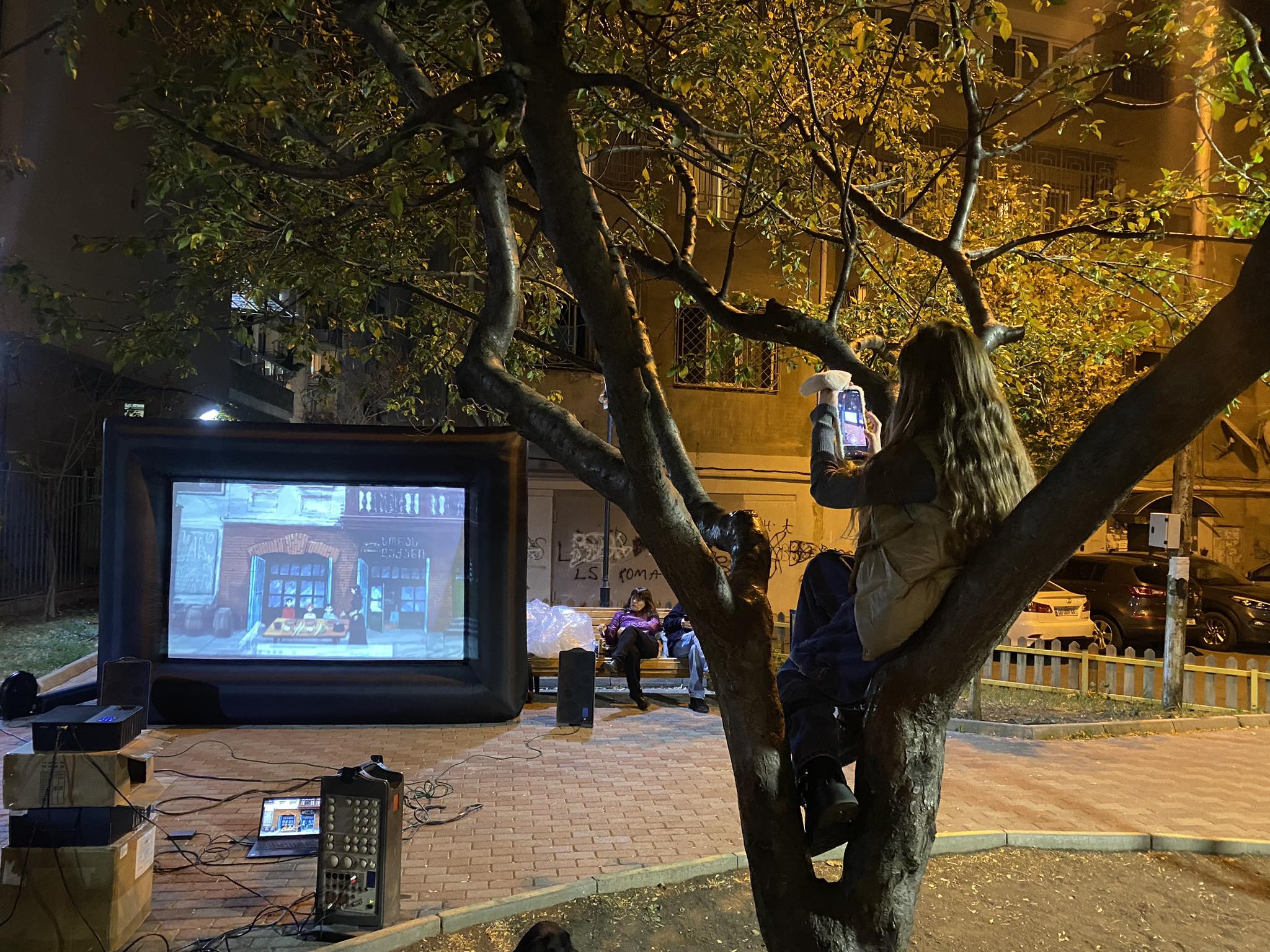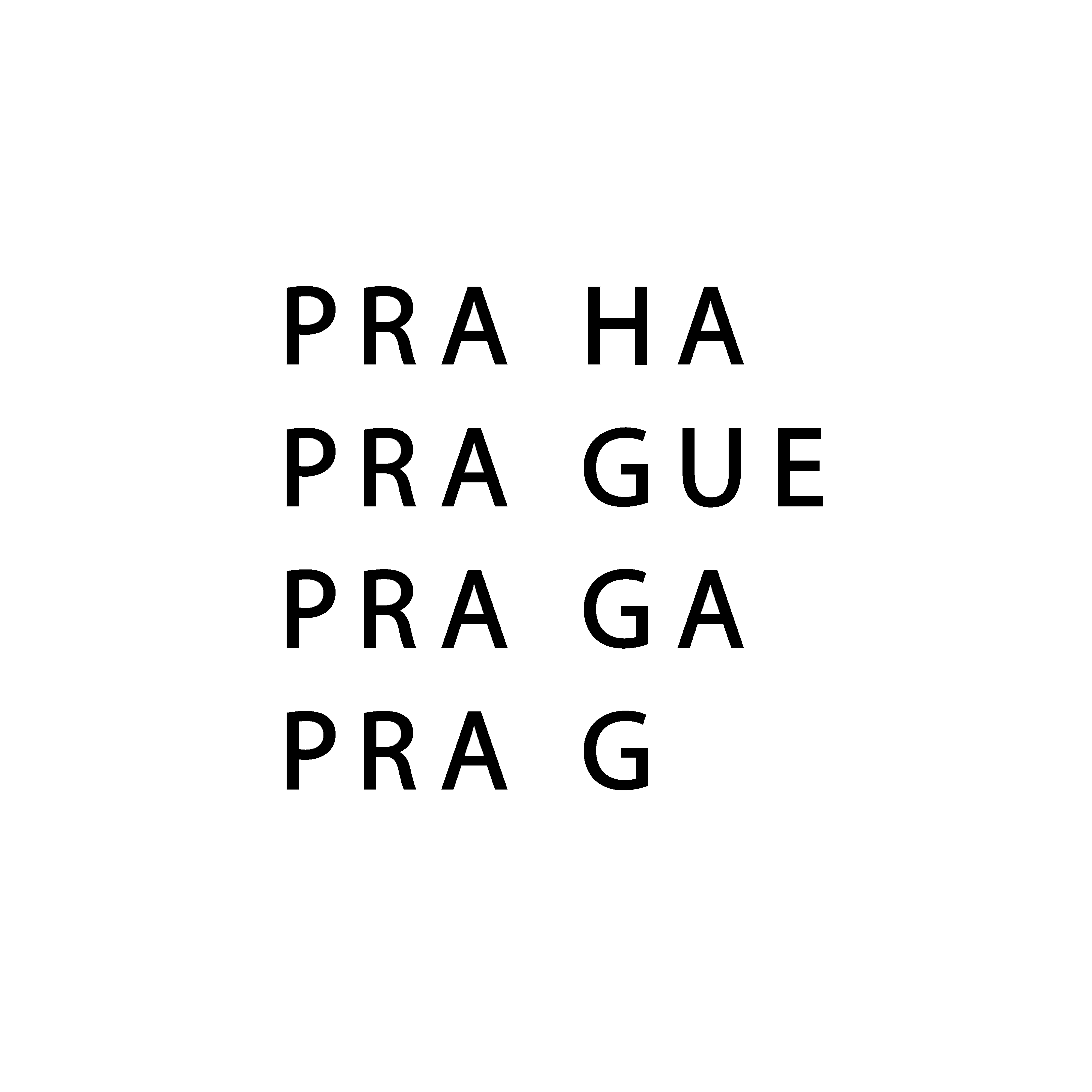Continuous Communication with the Audience
PR HACKS
PRACTICAL TIPS
AUTHOR: Mária Hejtmánková, PR and Cultural Manager (Slovakia)

It all comes down to communication
Once you decide to screen films from KineDok’s selection, your venue becomes a distinctive community space, bringing your audience the finest from Central and Eastern Europe documentary film production. You are offering more than movies; you deliver experiences! Even with all of this on your side, you might still find yourself unable to attract viewers. It all comes down to communication. It plays a pivotal role in our daily lives, serving as a means for connection and information exchange. Establishing effective communication with your audience, supported by well-tailored marketing and PR efforts, is crucial to drawing in viewers.
Budget
The PR budget is frequently underestimated, particularly by cultural and non-profit spaces prioritizing financial investment in their programs but overlooking the need for effective communication with the public. When formulating the budget, it’s crucial to establish specific allocations for both PR and marketing. Adequate communication is essential for every cultural event in the program and for promoting each screened film. Before finalizing the budget, consider how you intend to reach your audience. Define your audience, determine how best to reach it and assign funding for such purpose. Be realistic and think it through. What is the effect of program posters alone? What is the impact of movie posters? How many are truly necessary, and where is the best place to display them?
What is the reach of paid advertising on social networks? Is it well-tuned? Do you avoid paid advertising? Consider not doing so if a broader reach is desired for individual posts and your social media page. Go the extra mile and try creating videos, reels, stories, etc. Who is in charge of your PR? When it comes to PR, the role of a PR manager is often undervalued. This position is either combined with other responsibilities or receives low remuneration, requiring the individual to work on additional projects. Ideally, one person employed full-time should communicate with the media, create content for social networks or a website, and focus on other activities related to enhancing the program’s visibility.
WHAT TO FOCUS ON?

Maintaining constant communication with your audience is beneficial, even outside social networks. A simple and budget-friendly communication method is direct email or newsletters. But remember, sometimes, less is more. Define both the content and frequency of your email communications to avoid being perceived as bothersome and ensure the content remains concise and interesting.
Direct marketing can be a potent tool in identifying the target audience and devising effective communication strategies. It also provides a cost-effective alternative to conventional advertising methods. If you lack a mailing list to reach your viewers, consider asking them if they would like to receive information about your program when they enter the screening room.
An alternative method of direct personal communication could involve WhatsApp or Signal groups, allowing you to share information about upcoming discussions and screenings. A powerful marketing tool, likely familiar to you, is the influence of positive references, commonly recognized as word of mouth (WOM).

How can you optimize this? Reflect on occasions when you recommend a restaurant, hotel, or a particular venue to your friends. What added value do you provide in those instances, and when and where does WOM typically begin? Following each discussion or screening, encourage your audience to explore other films featured in your curated program, just like they do at places like the Georgian Art House Gori or the Hungarian Telep.
Introduce them to the film’s central theme and the guests invited to the discussion. Much like Alternativ Közösségek Egyesülete, always display a poster of the next film to be screened. If your space and technical capabilities allow, take inspiration from Dokukino, which promotes its program through original videos. You can subsequently share the discussions held during the screenings on your website or social media channels or highlight specific captivating moments from these debates.
Timing
Timing is of the essence. Is it sufficient to post on social networks a day before the screening? Is it enough to rely solely on posters displaying your monthly program scattered around the city? Cultural venues offer a diverse range of programs, akin to a box of chocolates, each with its unique flavor. Therefore, providing comprehensive information about the film program well in advance and distributing movie posters systematically is advisable.
When is the ideal moment to start advertising a particular screening, and how should you go about it? Place the film poster in locations frequented by potential viewers at least two weeks before the screening, prominently displaying the date and time.
Additionally, start promoting the screening early through social networks, local media, direct email, and other channels. Remember to mention what makes a film screening at your venue special.

Connect with media representatives
For instance, the film might not be available through regular cinema distribution or on TV, or your event may include a discussion or other program featuring exciting guests. Recognizing these unique aspects is essential. Notable cultural centers, such as STANICA ŽILINA-ZÁRIEČIE in Slovakia and the Romanian MA HUB, attract the highest number of spectators, particularly during their summer outdoor screenings. What’s your experience? Establish a connection with media representatives, regularly update them about your program and invite them to take part in the screenings. In this context, once again, less is more.
To ensure your messages resonate with media representatives, communicate them clearly, concisely, and in moderation. Express gratitude for any mention of your program. Create a marketing calendar using Sheets on Google Drive or a digital dashboard, where you mark the days of communication and the corresponding formats. Effective marketing relies on clear planning. Last but not least, you also need to consider the timing of the actual film screening. Pick the optimal day and time based on your local circumstances, e.g. assess other city events featuring similar films or major events that might lead to lower attendance.
CLEAR MESSAGE

Who is Your Audience?
It might be detrimental to operate under the belief that a film you are about to screen suits everyone. You should narrow it down and identify your target audience. Who genuinely wants to see it? Who should see it? Despite attending your events, visitors likely have different interests and perspectives than you do. Where do they spend time when they are not visiting your venue? What are their interests? Are they employed, currently studying, or in retirement? What communication channels do they prefer—Facebook, Instagram, direct email, posters, radio, podcasts, or other? If you find yourself unable to address these inquiries, consider conducting a survey using a questionnaire. You can share it as a sponsored post on social networks or hand it out directly to attendees of your events. And once again, we come back to the golden rule that less is more. The questionnaire should be short, with clear and concise questions. Don’t forget to ask whether the respondents are interested in receiving your newsletter.
How to maintain your community?
If you are located in a city with secondary schools or universities, consider establishing partnerships with them. Reach out to educators, particularly those teaching a subject related to the film, engage with students, and work towards cultivating and sustaining a community. If the prospect of young individuals eventually moving away for job opportunities, further education, or starting families concerns you, remember that they have shared a significant part of their lives with you and are likely to continue sharing their feelings and experiences.
To maintain the community, adapt your program and communication methods to cater to the evolving demographics of existing visitors while also welcoming new audiences. Consider organizing screenings for parents with children, a practice similar to what carries out. While adults enjoy a movie outside, there is a specially curated program for children indoors featuring creative activities. They are also offered snacks they can take home if there are any leftovers. This approach creates a charming atmosphere.
ADAPT YOUR PROGRAM AND YOUR APPROACH

The FUTRA Club extended invitations for the film beyond regular viewers, including representatives of the local social services authorities. Is there a significant number of seniors in your city? Be sure to consider them while curating your program. For instance, consider connecting with organizations that bring them together. These places are often frequented by active seniors who enjoy participating in new activities, particularly those related to the arts.
Do you collaborate with the city or district? Have you established relationships with the owners of nearby shops, cafés, ice cream parlors, etc.? You can showcase movie posters in these locations and interact with your audience. Establishing connections between communities is of utmost importance.
A model example of this approach is a cinema in the small Slovak town of Stupava. You can find film posters all over the town, in various locations, such as shops, art schools, ice cream parlors, or restaurants. These posters serve as the fundamental means of communication with the audience, fostering a sense of ownership among the townspeople, who perceive it as “their cinema.” The venue is housed in the Cultural Centre. Tickets are conveniently available at the cinema café, offering beverages, popcorn and even books with artistic merit suitable for adults and children. Engaging with your audience goes beyond conveying information; it involves providing added value to enrich their overall experience.
Explore New Narratives and Fresh Topics
What is the subject of the film scheduled for screening at your venue? What issues does it address? Before initiating communication about the movie, address these questions. Tell the film’s story, emphasize its central theme and reach the audience on a personal level.
Take the film Holy Dilemma, for example. Have you ever wondered what being a Roman Catholic priest is like? What are the implications of celibacy? Is it necessary? Do you know a priest who didn’t observe celibacy? How did people treat him? Approach these questions with sensitivity. In both your communication and film-related discussions, you can explore relevant issues, whether they are of global significance or specific to your local area.


By exploring the film’s themes, you can shed light on current social events. For instance, consider this post about screening the documentary Sieben Winter in Tehran: “Today is World Day Against the Death Penalty. The documentary Seven Winters in Tehran by Steffi Niederzoll is currently playing in the cinema. It tells the life story of Reyhaneh Jabbari, an Iranian student who killed her rapist and faced execution as a consequence.“
The Hungarian Kinodomino has designed plane tickets as invitations for a virtual journey to Mexico, promoting Hecho En Mexico. The authentic visuals drew attention to the documentary, which retells the history of Mexican culture through music. The event immersed the audience in Mexican ambiance, featuring cuisine, music, and decorations. They created an experience beyond a simple screening—an event you’d want to relive.

Another significant added value of KineDok screenings lies in the discussions. Drawing from past experiences, you know that people enjoy attending events featuring well-known figures in your town. Invite them as guests to the post-screening discussion. Each KineDok documentary brings up topics that need to be discussed. Each has won an award and has been screened at major festivals.
This kind of information resonates with audiences. An enticing feature could be a film curator presenting content in an appealing manner. For example, when guests from other NGOs are invited to attend an event at the Budapest pub Gólya, they actively promote the event on their respective social media platforms. The greater your connections with other organizations and communities, the broader your potential audience becomes.

Social Networks
People don’t like them, yet they spend so much time on them. Which social network does your audience prefer? What is the best time to post an invitation? In his book , Nobel Laureate Daniel Kahneman outlines two systems that govern our thinking. The first is fast, intuitive, and emotional, while the second is slower, more goal-oriented, and logical. Leveraging both systems in our social media communications is crucial.
The overwhelming amount of information coming at us from every direction is diluting people’s attention spans, especially on social media. To capture attention, consider sharing visually appealing content (photos, videos) that stands out as viewers swiftly scroll through each post. At the same time, users seek valuable and concise content that attracts and motivates them to click on a link for more information and ultimately attend the film screening. Last-minute invitations without added value are unlikely to attract viewers. Use simple, understandable language, and avoid writing entire synopses in your posts. As an example, consider the post for Nisha Pahuja’s To Kill a Tiger.

KineDok is a brand known for delivering impactful documentaries. By incorporating photos and promotional materials featuring the KineDok logo, individuals captivated by previously curated events will naturally engage. The visual identity catches the eye at first glance. It is linked to the logo but also to the values we embody.
When implemented correctly and consistently, films from the KineDok collection become instantly recognizable. This cultivates lasting recall of the KineDok brand among the audience. Consistent communication of this identity is key. Don’t forget to use #kinedok on social media to connect all KineDok unique spaces. In addition to basic information on each film, KineDok provides you with: posters, synopsis, photos with KineDok logo, trailer and press kit.
These resources are designed to assist you in effectively communicating your program and delivering exceptional experiences to a broad audience. Every member of your organization actively contributes to the creative process of developing communication tools at various stages. Remember, more heads are better than one!
Notes and Sources
Daniel Kahneman: Thinking, Fast and Slow
Clarke L. Caywood: Public Relations
KineDok survey ☺
https://www.facebook.com/zuendfunk
https://www.instagram.com/sakhinyc/
https://www.facebook.com/documentaryscreenings
PHOTOS:
GLISNÍKOVÁ, Lenka; MRÁČEK, Adam and Radka PISKAČOVÁ
Archive of our screening venues (Kinodomino, Futra)
Film still (Holy Dilemma)
Instagram (@sakhinyc)
We live the documentary film, be there with us.
Start each month with a fresh dose of information. Subscribe to the newsletter.
I hereby consent to the processing of the personal data.










